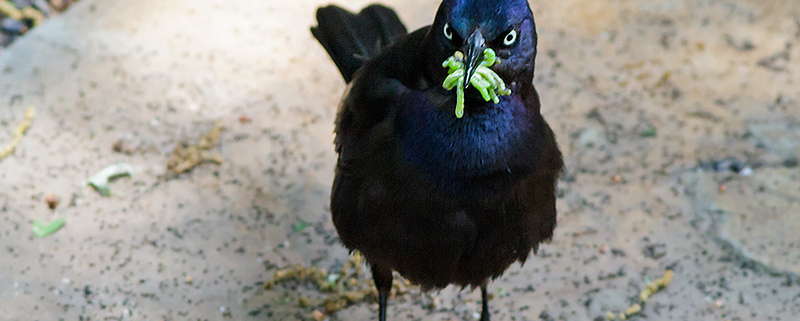Build a Mini Bird Sanctuary
Article by Plant NOVA Natives
Photo: Common Grackle by Paula Sullivan
The best sanctuaries for birds are undisturbed expanses of forests and meadows. Anyone can see that those are rapidly disappearing in Northern Virginia, and where they remain, they are rapidly shrinking below the size needed for many bird species. Those in charge of any patch of land can help some of these birds by adding plants to expand the habitat value of nearby parks and natural areas.
The partnering organizations that together make up Plant NOVA Natives are inviting individuals and communities to participate in a “Bird Sanctuary Planting Weekend,” October 25-28. People will be installing native canopy trees and understory plants all on the same weekend, all across the region, in a big celebration of trees and the natural world. In Fairfax County, the first twenty faith communities to apply will receive a free “mini bird sanctuary” – a native canopy tree and two native shrubs – assuming they have an appropriate location, as confirmed by volunteers who will be doing site visits to help the communities evaluate their properties for opportunities to improve habitat.
What does it take to provide sanctuary for birds? The first requirement is that the plants be native to the local ecosystem. This is because the diet of baby birds consists primarily of caterpillars, and most caterpillars can only eat the plants with which they evolved. By far the biggest source of food for caterpillars is the leaves of large native shade trees, by virtue of their immense canopy compared to smaller plants. The second requirement is to provide food for the adults. Adult birds also require caterpillars and other bugs for protein. They also need the seeds and fruits from the smaller native trees, shrubs, vines, and flowers that are tailor-made for their nutritional needs (unlike those of many non-native plants.) Different bird species feed and nest at different heights from the ground, so native plants are needed at all levels. You may notice, for example, the preference of sparrows and robins for the ground layer, bluebirds for the shrubs, bluejays higher still, and woodpeckers in the canopy. (The fact that some birds require the lower levels is the reason why it is so imperative to keep cats indoors.)
Another reason to install native plants at the ground layer Is that many of those caterpillars feeding up in the trees spend part of their life cycles sheltering on the ground. They cannot find the habitat they need in mounds of mulch, not to mention in lawns where they get chopped up by lawn mowers. What does provide shelter is native perennials and dead leaves. So once you have your trees and shrubs in place, you can have the fun of exploring the numerous native groundcover options, gradually expanding the landing pad out to the drip line as the trees grow.




